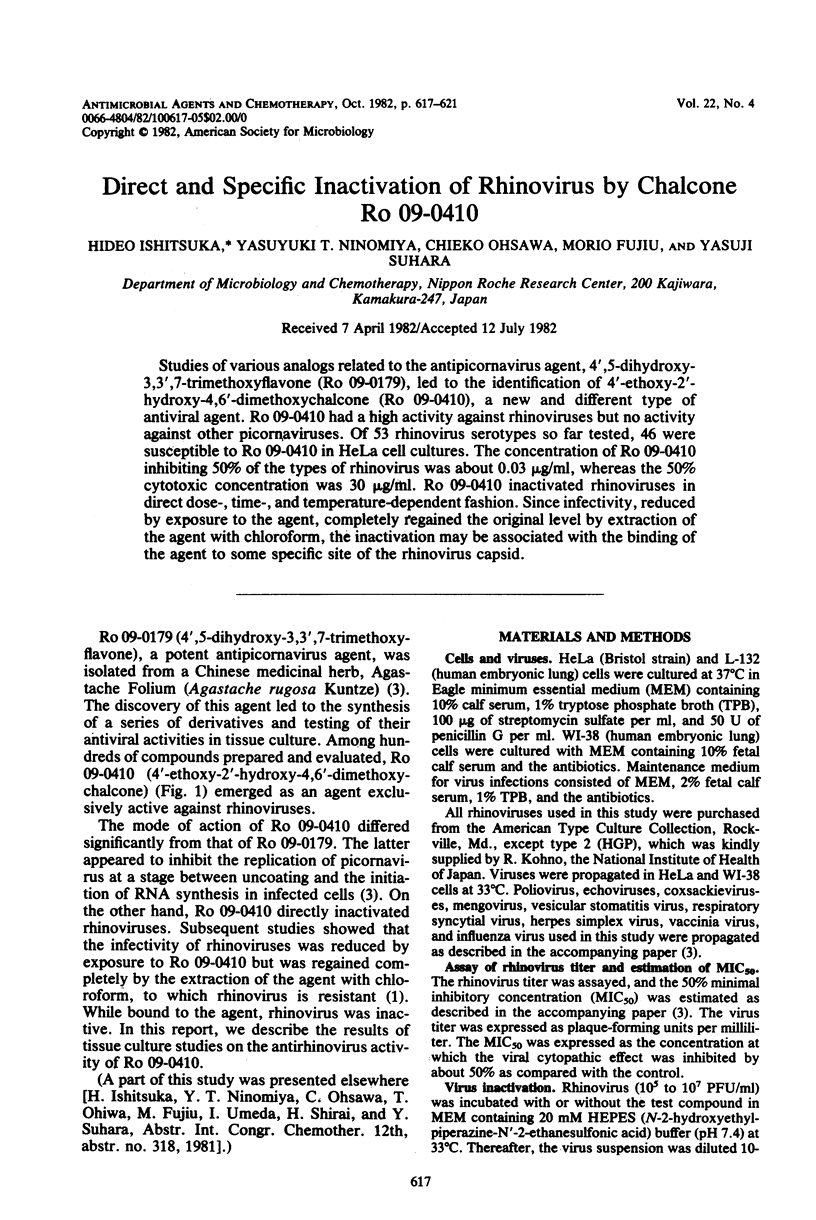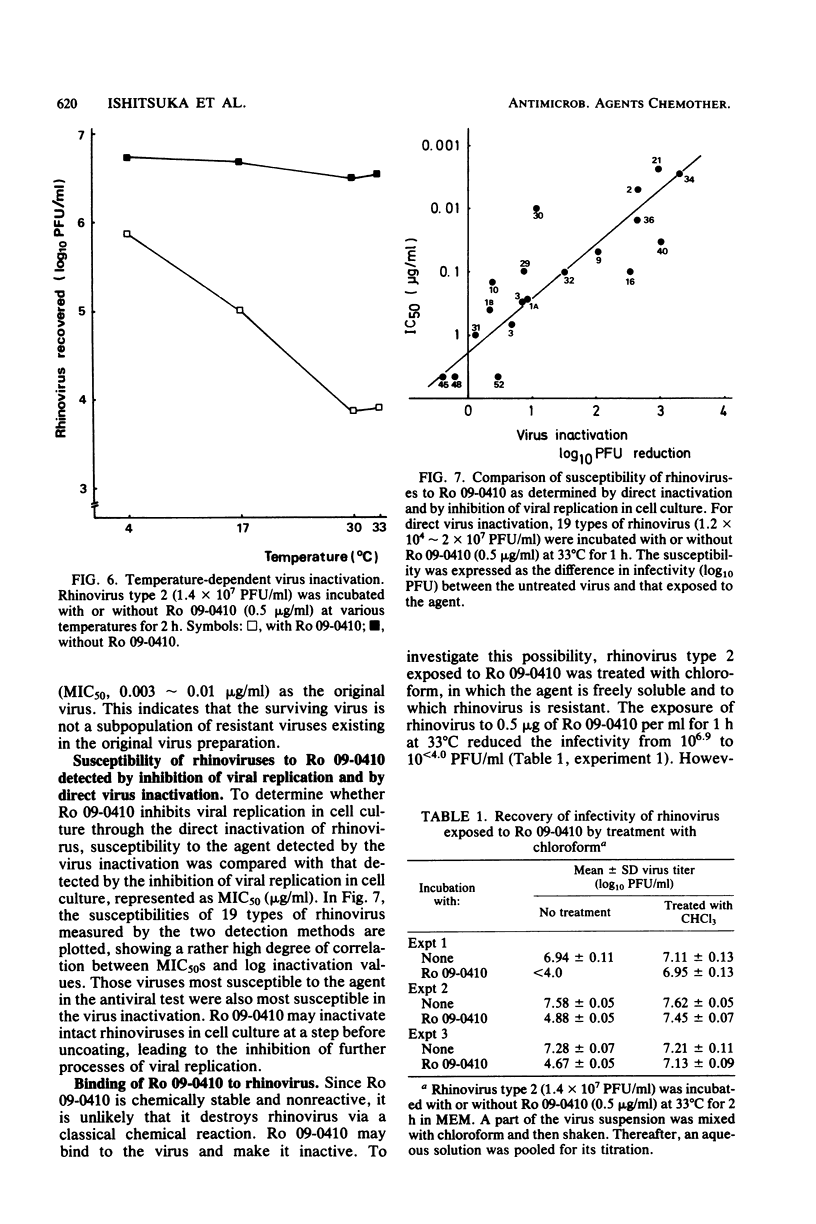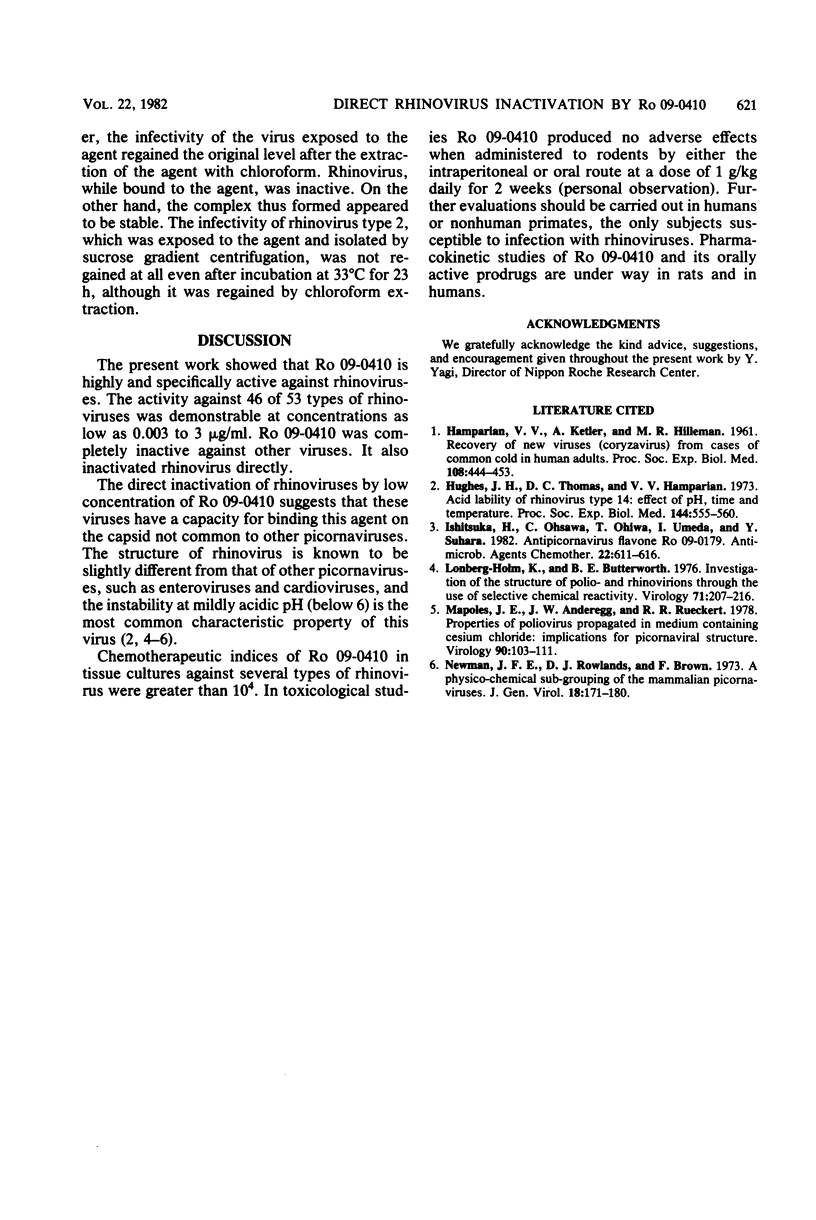Abstract
Studies of various analogs related to the antipicornavirus agent, 4',5-dihydroxy-3,3',7-trimethoxyflavone (Ro 09-0179), led to the identification of 4'-ethoxy-2'-hydroxy-4,6'-dimethoxychalcone (Ro 09-0410), a new and different type of antiviral agent. Ro 09-0410 had a high activity against rhinoviruses but no activity against other picornaviruses. Of 53 rhinovirus serotypes so far tested, 46 were susceptible to Ro 09-0410 in HeLa cell cultures. The concentration of Ro 09-0410 inhibiting 50% of the types of rhinovirus was about 0.03 micrograms/ml, whereas the 50% cytotoxic concentration was 30 microgram/ml. Ro 09-0410 inactivated rhinoviruses in direct dose-, time-, and temperature-dependent fashion. Since infectivity, reduced by exposure to the agent, completely regained the original level by extraction of the agent with chloroform, the inactivation may be associated with the binding of the agent to some specific site of the rhinovirus capsid.
Full text
PDF




Selected References
These references are in PubMed. This may not be the complete list of references from this article.
- HAMPARIAN V. V., KETLER A., HILLEMAN M. R. Recovery of new viruses (coryzavirus) from cases of common cold in human adults. Proc Soc Exp Biol Med. 1961 Nov;108:444–453. doi: 10.3181/00379727-108-26962. [DOI] [PubMed] [Google Scholar]
- Hughes J. H., Thomas D. C., Hamparian V. V., Cramblett H. G. Acid liability of rhinovirus type 14: effect of pH, time, and temperature. Proc Soc Exp Biol Med. 1973 Nov;144(2):555–560. doi: 10.3181/00379727-144-37634. [DOI] [PubMed] [Google Scholar]
- Ishitsuka H., Ohsawa C., Ohiwa T., Umeda I., Suhara Y. Antipicornavirus flavone Ro 09-0179. Antimicrob Agents Chemother. 1982 Oct;22(4):611–616. doi: 10.1128/aac.22.4.611. [DOI] [PMC free article] [PubMed] [Google Scholar]
- Lonberg-Holm K., Butterworth B. E. Investigation of the structure of polio- and human rhinovirions through the use of selective chemical reactivity. Virology. 1976 May;71(1):207–216. doi: 10.1016/0042-6822(76)90106-9. [DOI] [PubMed] [Google Scholar]
- Mapoles J. E., Anderegg J. W., Rueckert R. R. Properties of poliovirus propagated in medium containing cesium chloride: implications for picornaviral structure. Virology. 1978 Oct 1;90(1):103–111. doi: 10.1016/0042-6822(78)90337-9. [DOI] [PubMed] [Google Scholar]
- Newman J. F., Rowlands D. J., Brown F. A physico-chemical sub-grouping of the mammalian picornaviruses. J Gen Virol. 1973 Feb;18(2):171–180. doi: 10.1099/0022-1317-18-2-171. [DOI] [PubMed] [Google Scholar]


